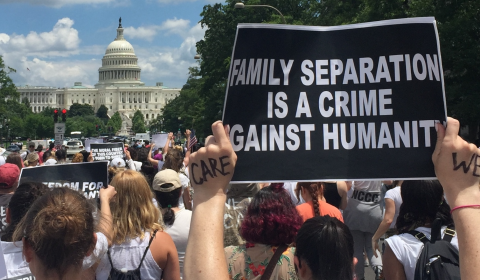A shocking new report warns we’ve wasted decades and billions of dollars promoting recycling as the solution to plastic waste when in actual fact, these efforts have fundamentally failed.
According to a new report published on Tuesday by environmental group Greenpeace, the state of plastic recycling in the US is so appalling that no plastic packaging can even be considered recyclable.
Painting a dire picture for the future, it’s revealed that just 2.4 million tonnes of plastic were recycled last year out of the 51 million tonnes that were thrown out.
This figure amounts to a paltry five per cent of all disposed-of household waste that didn’t wind up in landfill during 2021 which, if you can believe it, marks a 3.7 per cent decrease since 2018.
‘The plastics and products industries have been promoting recycling as the solution to plastic waste since the early 90s. Some 30 years later, the vast majority of US plastic waste is still not recyclable,’ reads the report.

‘The US plastic recycling rate was estimated to have declined to about 5-6% in 2021, down from a high of 9.5% in 2014 and 8.7% in 2018, when the US exported millions of tons of plastic waste to China and counted it as recycled even though much of it was burned or dumped.’
These findings build on a 2020 report which uncovered that only some PET and HDPE bottles can be legitimately labelled ‘recyclable’ based on the Federal Trade Commission’s ‘green guide’ to environmental marketing.
It states that companies should solely be permitted to make unqualified claims about their products or packaging being ‘recyclable’ if 60 per cent of their consumers have access to a recycling facility (the majority of whom do not).
In addition, for a type of plastic to be considered ‘recyclable in practice and at scale,’ it needs to have a recycling rate of 30 per cent, the Ellen MacArthur Foundation says.






















